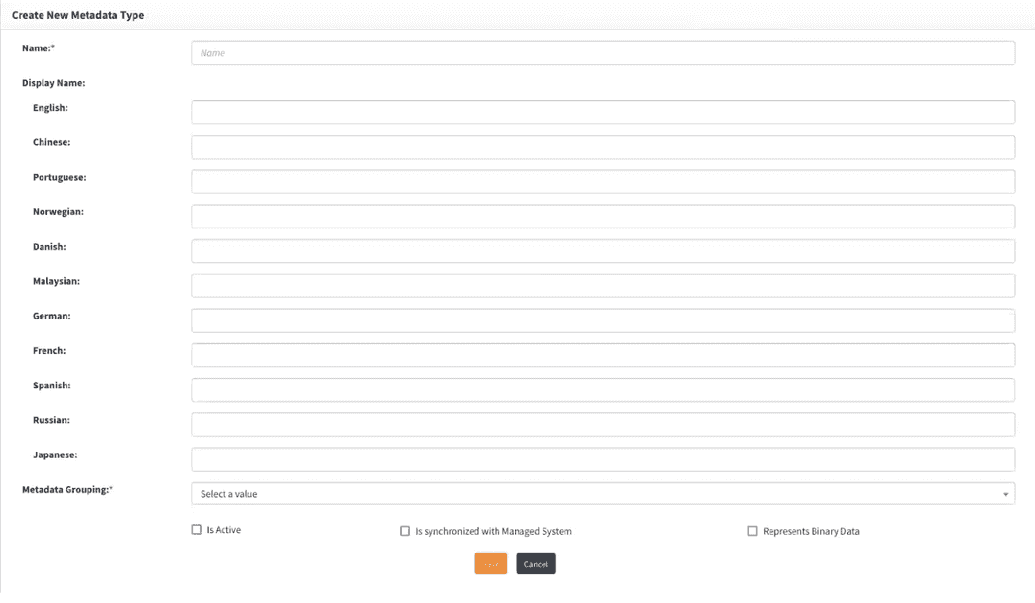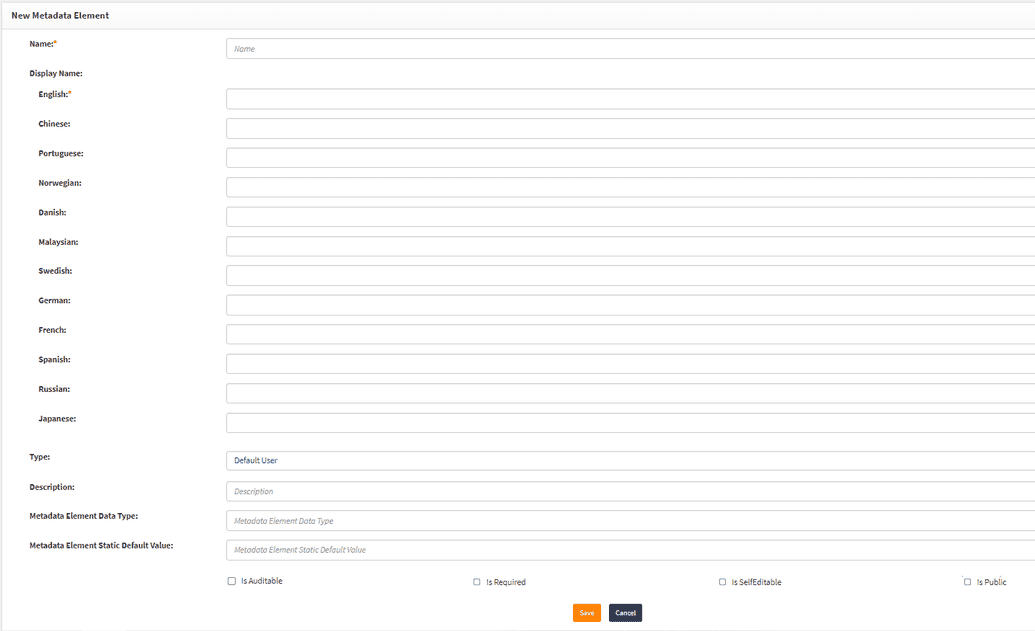Metadata types
As you integrate your applications with OpenIAM, you will find cases where you need to extend the model to better align it with the end applications. Each of the above objects can be extended by creating a new Type (aka Metadata Type). Using types, new objects can be created and have their own set of custom attributes. This allows users to represent objects in OpenIAM using both familiar and aligned terminology with the target application.
Metadata type
To create a new type go to Administration > MetaData type and choose New MetaData type from the left side menu.
After doing so, you will see a screen as shown below.
The following sections describe the Types Manager capabilities.
| Column name | Description |
|---|---|
| Name | Name as it will be defined in OpenIAM. |
| Display name | An the subsections stand for the name to be displayed in the language active in OpenIAM. |
| Metadata Grouping | Many objects in OpenIAM has types. Hence, there is grouping introduced for supporting. business precesses. Here, the user chooses the type for respective object. |
| Is active | Makes the type active for use. |
Further, the types are used for objects arrangement to suit business purposes and for connecting the list of attributes to a respective template.
Metadata element
There is another object that you can create and assign attributes to suit your business model — metadata elements. While metadata types define the overall categories or purposes of metadata, metadata elements are the specific data points or fields that fall within these categories, being specific units of information that fall within the metadata type classification.
The process of creating a new metadata element is similar to that of creating a metadata type described above. To create a new element, follow the steps below:
- Go to Administration > MetaData Type.
- Type in and select the name of the object you want to create an element for. For example, if you want to create an element for a User Object Type, find it in the grouping and click Search.
- Select the type of user you want to create an element for. As an example, the Default User Type will be used. Find the required type and click the Edit icon.
- Scroll down in the window that opened and click on New Metadata Element. After doing so, you will see a screen as shown below.
| Column Name | Description |
|---|---|
| Name | The name as it will be defined in OpenIAM. |
| Display Name | The name that will be displayed in the language active in OpenIAM. |
| Type | The type of object this element falls under. Earlier, we selected Default User, so it is pre-filled. |
Click Save to save changes and proceed.

